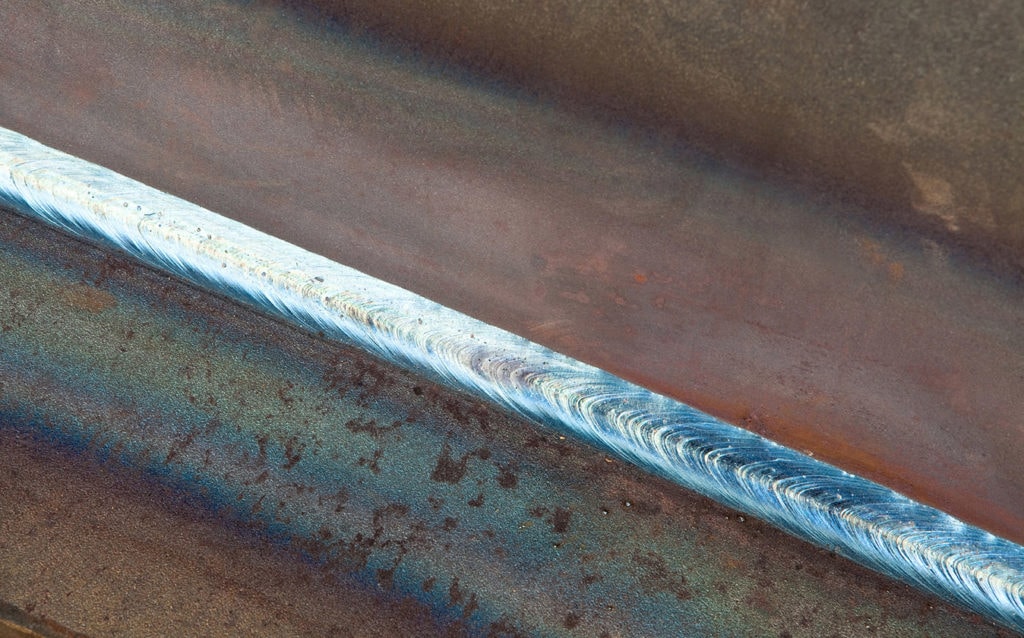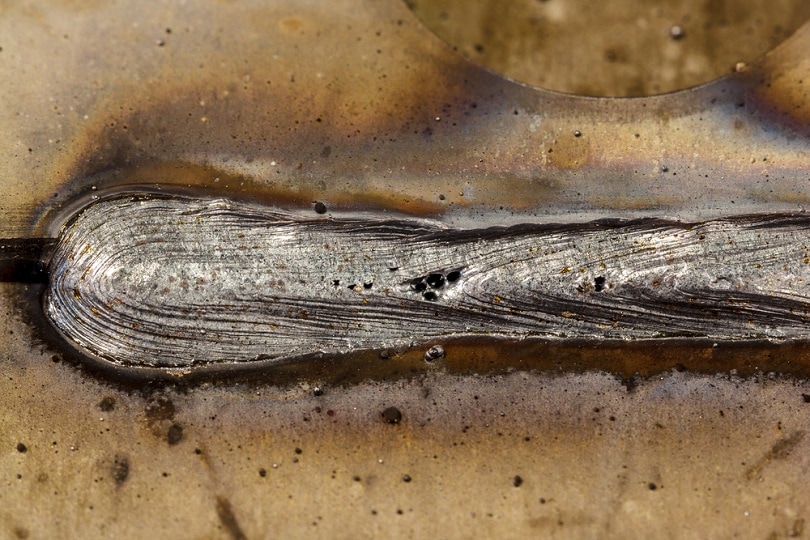What Causes Pinholes in Welding? Causes & Solutions
Last Updated on

Welding is a technical work that relies on precise calculations, temperature, angle, and welding arc, among other factors. Welders need to prepare their workspace and environment to ensure that the workpiece is not contaminated. Using incorrect methods leads to pinholes in welds. The presence of pinholes in welding does not mean they should be there.
Causes and Solutions to Pinholes in Welding
Pinholes make weld joints weak and compromise the stability of a structure. The causes are:
1. Moisture
Sometimes pinholes appear on weld joints over time. This could be a result of the changing seasons that make the surface of the weld wet. Sensitive coatings show pinholes when they are exposed to moisture. The weld joint coating develops pinholes when it is below the dew point.
When it happens, preheat the exposed part to temperature levels above the dew point.
2. Outgassing
Outgassing refers to releasing into the atmosphere the dissolved gases that were frozen and trapped by the metal material during welding. Pinholes are evidence of outgassing.
Outgassing is expected because, for every 100 degrees of metal heating, gases frozen or trapped in the weld substrate expand to double their volume. The excess volume forces the gases trapped beneath the metal surface to escape causing pinholes while undergoing the curing process.
Similar to pinholes that form as a result of humidity, you can eliminate them by preheating. However, some parts make preheating impossible because not all the gases will come out. In such scenarios, the problem is in the substrate. You can improve the quality by eliminating contaminants.

3. Contamination
This is a lethal agent of pinholes. When the air quality in your workshop is polluted, it affects the workpiece when welding. Contaminants include oil, grease, moisture, and particulates.
Contamination can arise from lots of places in a workshop. However, the first step is to check the air filtration system. Ensure that you have dry and filtered air circulating.
Methodically, inspect the spray area and the oven. It would be best if you had a controlled environment to craft satisfactory and quality welds. Consider hiring experts to design an environmentally controlled workspace for you.
4. Coating Thickness
Suppose you apply a thin layer while coating, pinholes will appear. The application technique you settle for can also prevent or encourage the formation of pinholes.
Experience is vital. Whereas the simple solution is to increase the coating’s thickness, a professional will do the job best. The application process and technique make a big difference in the quality of your welds.
Other than the examples given above, the list of issues that can create pinholes is substantial.
- Don’t hold the gun in one place for too long
- Use enough anti-spatter gel or spray
- Have a sufficient gas supply
- The gas hose is not compromised through burning, contamination, or crushed
What Happens if the Pinhole Problem is Beyond Coating?
Only on rare occasions will coating cause pinholes during welding. Should this happen, explore other options before you settle on changing the coating. Re-examine all the steps because you might hurry in changing the coating yet the problem is emanating from another factor within the pool.
How to Check for Pinholes
When dealing with industrial parts, you need to be sure of the welds’ quality leaving your workshop. Pinholes are defects that highlight the integrity of the welding process. Because pinholes can form later after exposure to different climatic changes, finding and eliminating them at the store is a necessity.
The best tool for the job is a holiday detector. Its sole purpose is to detect all forms of pinholes lying within your weld. A holiday detector runs a water charge with 12-90 volts across the weld parts.
FAQs
What happens when pinholes appear on my weld?
It means that the weld’s quality is compromised and has potential contaminants like trapped gas, oil, or moisture. It weakens the weld joint’s tensile strength.
How can I eliminate pinholes from my welding applications?
Focus on what causes them and prevent it early enough. Even though pinholes appear for various reasons, a controlled work environment coupled with the right welding technique will guarantee quality welds.
Conclusion
Pinholes in welding are a sign of defects emanating from the welding process. While they can be easily eliminated, you should start by preventing their occurrence in the first place. Always apply all the technical principles before you start your welding process.
You might also like:
- How to Join a Welding Union: Pros, Cons & Guide
- What Does DCEP Mean in Welding?
- How to Bevel Pipe for Welding: A Pipe Beveling Guide
Featured Image Credit: terekhov igor, Shutterstock
